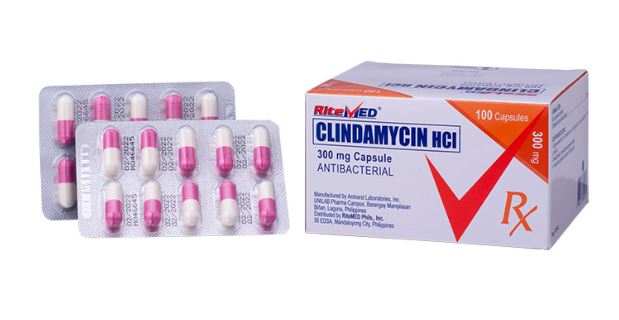Will Clindamycin Treat a UTI? Find Out the Answers

Clindamycin is an antibiotic medicine. It is used to treat bacterial infections. But will Clindamycin treat a UTI?
Well, Clindamycin is a lincosamide antibiotic. It treats skin, bone, and dental infections. In general, it’s not used for urinary tract infections. However, it cures UTIs in exceptional cases. But the fact is, it does more harm than good when it comes to treating UTIs. You experience side effects while using the medications for such infections.
In this article, we will discuss UTI treatment. Also, Pay attention to the negative effects of taking Clindamycin for UTIs as well. So without further ado, let’s start talking about the subject.
How Does Clindamycin Work to Treat UTIs?
Clindamycin is an antibiotic medicine. It can treat several bacteria. You may ask, can Clindamycin effectively treat a urinary tract infection (UTI)? Health specialists don’t consider it a fast-line treatment for UTI. But knowing how it works as an antibiotic is a basic fact.
Basically, it breaks bacterial protein synthesis. Specifically, it inhibits the activity of the bacterial ribosome. This cellular structure is responsible for assembling proteins. By breaking protein synthesis, Clindamycin prevents bacteria from growing. Also, stop spreading throughout the body.
Read More: Doxycycline Ruined My Life
Dosage and Duration of Clindamycin for UTI Treatment?

As we said before, Clindamycin treats dental, bone, and skin infections. Along with these, it also treats bacterial vaginosis. The medicine used to treat BV comes in two forms. Those are creams and capsules. Now the clindamycin dosage for BV is as follows:
Clindamycin Vaginal Cream: You can apply the cream directly to the vagina through an applicator. Generally, the dosage is to insert one full applicator (approximately 5 grams) of 2% clindamycin vaginal cream into the vagina. It’s better to apply at bedtime. The duration is 3 to 7 days.
Clindamycin Oral Capsules: Clindamycin 300mg capsules for BV are generally taken orally. You have to take it twice daily for seven days.
Clindamycin dosage for children: (Weight of child)
Dosage
- 10 kg or less
37.5 mg, or 1/2 teaspoonful, three times a day.
- More than 10 kg
8-16 mg per kg of body weight per day, in 3 or 4 equal doses.
- Severe Condition with a weight of more than 10 kg in
16-25 mg per kg of body weight per day, 3 or 4 equal doses
Clindamycin dosage for adults:
Adults take 150-300 mg every 6 hours for bacterial infections. In severe conditions, they take 300-450 mg every 6 hours.
Interactions with Other Medications Using Clindamycin for UTIs
Clindamycin interacts with other antibiotics. For your convenience, we will share a tabular form exhibiting the medicine category, the name of the medicine, and side effects when these interact with Clindamycin.
Medicine Category
- The medicines that interact with Clindamycin
- The interactions
Antibiotics
- Erythromycin
- Increased risk of gastrointestinal side effects
- Chloramphenicol
- Affect the effectiveness
- Lincomycin
- Increase the risk of side effects
Neuromuscular Blockers
- Neuromuscular blocking agents
- Enhanced effects of neuromuscular blockers during surgery
Antidiarrheal Agents
- Kaolin-Pectin, Diphenoxylate-Atropine
- Reduce effectiveness
Blood Thinners (Anticoagulants)
- Warfarin, Heparin
- Increase the risk of bleeding.
Vitamins
- Pantothenic acid and Pyridoxine
- Clindamycin decreases the effectiveness of the vitamins
Read More: How Rapid is Weight Loss with Farxiga?
Except for UTIs, What Other Diseases Can Be Treated with Clindamycin?
Clindamycin is FDA-approved to treat various infections. According to the National Library of Medicine, medicine is used to treat the following health issues,
- septicemia,
- intra-abdominal infections,
- lower respiratory infections,
- gynecological infections,
- bone and joint disorders,
- and skin and skin structure infections.
- streptococcal pharyngitis,
- acne vulgaris,
- bacterial vaginosis,
- severe pelvic inflammatory disease.
Is Clindamycin Safe to Use During Pregnancy or While Breastfeeding?

According to the US Food and Drug Administration, clindamycin is safe to use during pregnancy. In particular during the second and third trimesters. It’s also safe for breastfeeding.
According to the FDA, the medicine is safe during breastfeeding. A small amount of the treatment can pass into breast milk. Rarely it causes gastrointestinal issues in infants. So a proper guideline from the specialist must avoid gastrointestinal disturbances, diarrhea, and candidiasis (thrush, diaper rash).
Is Clindamycin Used to Treat UTIs in Dogs?
For dog UTIs, Clindamycin is used. It’s a versatile antibiotic. It defends aerobic and anaerobic gram-positive bacteria. Protozoal disease, Toxoplasma, is also healed through medicines.
However, it treats injuries, abscesses, and bone disease. Clindamycin comes in three different forms. These are oral liquids, pills, and capsules.
Precautions:
- Due to the medications, throat or esophageal ulcers sometimes happen. Therefore, a minimal dose has to be applied to dogs.
- The dose depends on the weight and severity of the infection in dogs.
Also Read: Can I Eat Bananas with Ciprofloxacin?
Side Effects or Risks of Using Clindamycin for UTI Treatment
As we know, Clindamycin is not for UTIs. As a result, using Clindamycin to treat UTIs comes with risks and side effects. The following are common clindamycin side effects:
Gastrointestinal Issues: Sometimes you feel nausea or vomiting. These are the common side effects. You can also feel abdominal pain and changes in bowel habits. Diarrhea gets worse sometimes. It turns into life-threatening issues like Clostridium difficile.
Allergic Reactions: You experience allergic reactions. It can range from mild skin rashes to severe allergic reactions. One can experience Anaphylaxis, which is a severe allergic action and needs a medical emergency.
Pseudomembranous Colitis: Clindamycin disrupts the balance of normal gut bacteria. It leads to the overgrowth of C. difficile bacteria. It causes
pseudomembranous colitis. The symptoms of the infection are diarrhea, abdominal pain, and a fever. In severe cases, the sicknesses become life-threatening.
Liver and Kidney Problems: An overdose of Clindamycin or taking the medication for a more extended period damages the liver or kidneys.
Skin Reactions: Clindamycin causes rash, itching, and hives. Rarely do skin cracks happen due to these medications.
Effectiveness of Birth Control Pills: Birth control pills lost their efficacy using the medicine.
What Are The Precautions While Taking Clindamycin for UTIs?
Taking precautions to avoid the side effects and risks of taking Clindamycin would be best. Here we go,
- When taking Clindamycin for UTIs, it is essential to follow some precautions:
- Medication should be taken according to the prescription. Do not take more or less than the recommended dose. Avoid taking it for a longer or shorter duration than instructed.
- Even if you start feeling better, complete the entire course of treatment. This will ensure that the infection is completely cleared. And reduce the risk of antibiotic resistance.
- Watch out for signs of an allergic reaction
- If you experience severe side effects, contact your doctor.
- Store Clindamycin in a closed container at room temperature. Could you keep it away from moisture and heat?
Frequently Asked Questions (FAQs)
How fast does Clindamycin work for UTIs?
Clindamycin’s efficacy and speed vary by the condition of the patient. Also it depends on the severity of the infection, and the type of bacteria. However, it will start working in two to three days. You can see the results in seven to ten days.
Are there specific types of UTIs that can be treated with Clindamycin?
Clindamycin is not the first choice to treat UTIs, but healthcare professionals recommend using it sometimes. However, Clindamycin is not used to treat bladder infections or kidney infections. Rather than these infections, you can get better results for skin, bone, and dental problems through medications.
Can Clindamycin be used in children for UTI treatment?
Clindamycin can be used in children’s UTI treatment. But like the adult treatment, it’s not the first choice to treat even children’s UTIs. If specific bacteria affect UTIs in children, doctors can suggest Clindamycin.
Read More: Square Butt
Conclusion
So, will Clindamycin Treat a UTI? We hope you have the answer now. Clindamycin is an excellent antibiotic that can protect you from several types of bacteria. But treating UTIs with this antibiotic is not the first choice. Keep in mind the side effects and avoid taking the medication.
Don’t use it to treat urinary tract infections without your doctor’s approval, either. There are so many antibiotics available to treat UTIs effectively. Try them, as your healthcare provider suggests.





